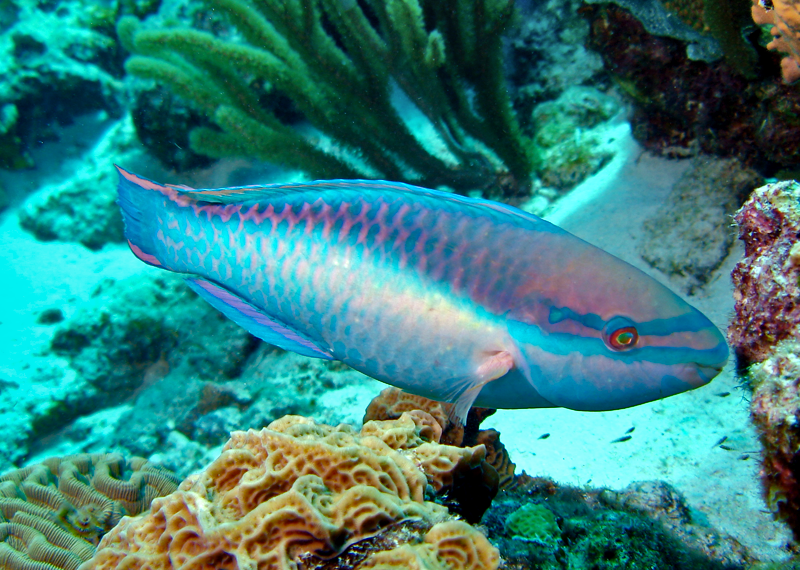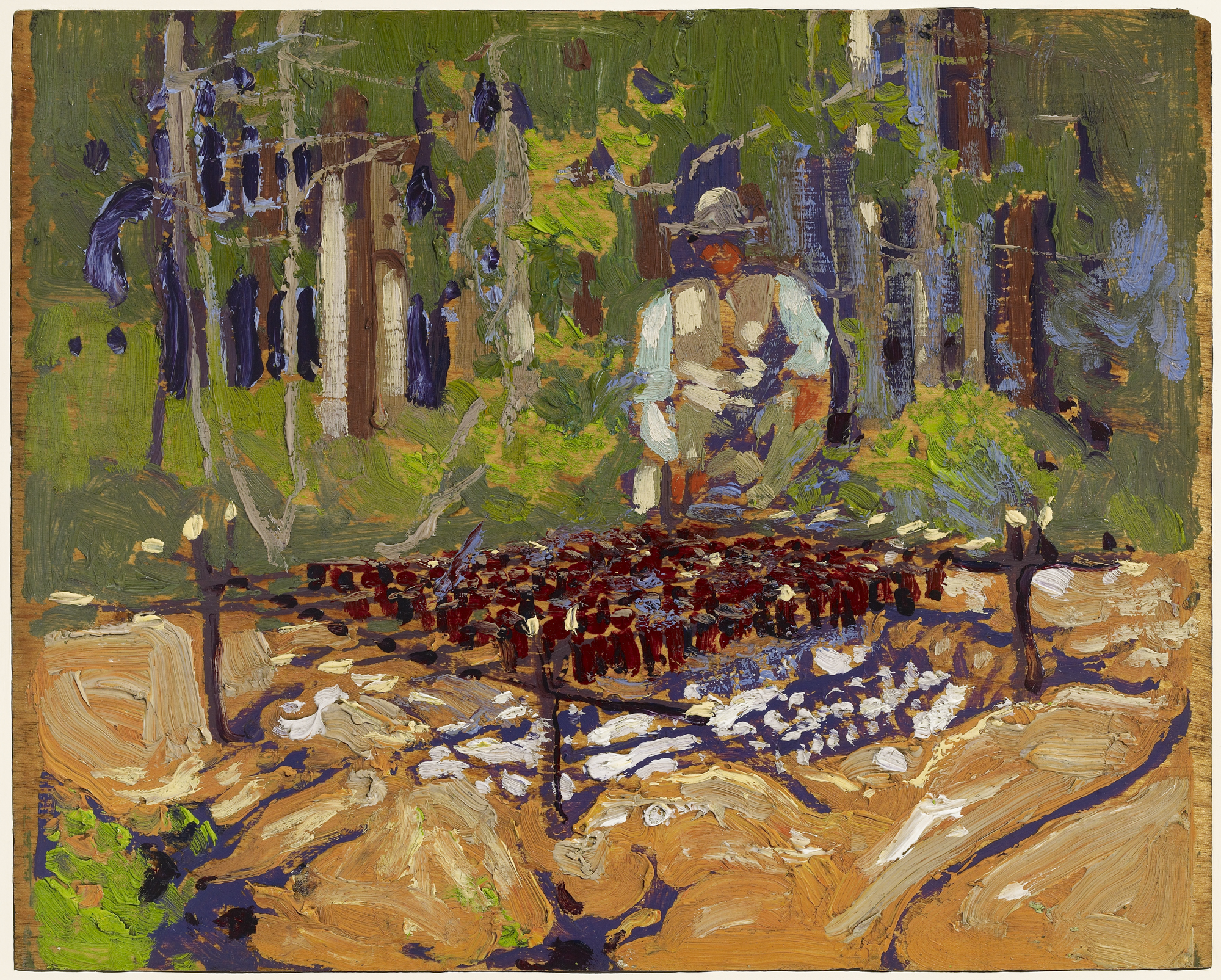|
Antipatharia
Antipatharians, also known as black corals or thorn corals, are an order of soft deep-water corals. These corals can be recognized by their jet-black or dark brown chitin skeletons, which are surrounded by their colored polyps (part of coral that is alive). Antipatharians are a cosmopolitan order, existing in nearly every oceanic location and depth, with the sole exception of brackish waters. However, they are most frequently found on continental slopes under deep. A black coral reproduces both sexually and asexually throughout its lifetime. Many black corals provide housing, shelter, food, and protection for other animals. Black corals were originally classified in the order Ceriantipatharia along with ceriantharians (tube-dwelling anemones), but were later reclassified under Hexacorallia. Though they have historically been used by Pacific Islanders for medical treatment and in rituals, its only modern use is making jewelry. Black corals have been declining in numbers and ... [...More Info...] [...Related Items...] OR: [Wikipedia] [Google] [Baidu] |
Ceriantipatharia
Ceriantipatharia is a deprecated order of corals within the class Hexacorallia, although it was initially considered as a subclass in older taxonomies. It was split and it is now replaced by its previous two constituent orders, Ceriantharia (tube-dwelling anemones) and Antipatharia (black corals). History and importance as a subclass (now an order) of Hexacorallia Since its definition by Édouard Van Beneden, in 1897, until its deprecation , it remained an important taxon due to its high rank (subclass) in the taxonomy of Cnidaria, profusely cited in the scientific bibliography and studied by scientists like the paleontologists Dorothy Hill and John W. Wells, and the marine biologist J. E. N. Veron, among many others. Van Beneden considered that the similarities in morphology between the larva of the cerianthids (which he called ''cerinula'', portmanteau of ''ceri''anthid and pla''nula'') and the antipatharian polyp were the main reason for separating the orders Ce ... [...More Info...] [...Related Items...] OR: [Wikipedia] [Google] [Baidu] |
Antipathidae
Antipathidae is a family of corals in the Order (biology), order Antipatharia, commonly known as black corals. They are generally considered a deep-water taxon; however, some of the most diverse communities are known from tropical shallow waters. Taxonomy This family contains the following genera according to the World Register of Marine Species: * ''Allopathes'' Opresko & Cairns, 1994 -- 3 species * ''Antipathes'' Pallas, 1766 -- 66 species * ''Cirrhipathes'' de Blainville, 1830 -- 16 species * ''Hillopathes'' van Pesch, 1914 -- 1 species * ''Pseudocirrhipathes'' Bo & al., 2009 -- 1 species * ''Pteropathes'' Brook, 1889 -- 1 species * ''Stichopathes'' Brook, 1889 -- 34 species Image:Antipathes dichotoma1.jpg, ''Antipathes dichotoma'' Image:Cirrhipathes sp - coral-wire-groovy.jpg, ''Cirrhipathes sp.'' Image:Stichopathes sp NOAA.jpg, ''Stichopathes sp.'' Bibliography * * TERRANA, LUCAS, et al. “Shallow-Water Black Corals (Cnidaria: Anthozoa: Hexacorallia: Antipatharia) f ... [...More Info...] [...Related Items...] OR: [Wikipedia] [Google] [Baidu] |
Stylopathidae
Stylopathidae is a family of corals belonging to the order Antipatharia Antipatharians, also known as black corals or thorn corals, are an order of soft deep-water corals. These corals can be recognized by their jet-black or dark brown chitin skeletons, which are surrounded by their colored polyps (part of coral th .... Genera: * '' Stylopathes'' Opresko, 2006 * '' Triadopathes'' Opresko, 2006 * '' Tylopathes'' Brook, 1889 References Antipatharia Cnidarian families {{hexacorallia-stub ... [...More Info...] [...Related Items...] OR: [Wikipedia] [Google] [Baidu] |
Aphanipathidae
Aphanipathidae is a family of corals in the order Antipatharia. Species in this family have short, blunt polyp tentacles that tend to be uniform. Spines range from conical to cylindrical and usually have conical tubercles. Unlike Antipathidae Antipathidae is a family of corals in the Order (biology), order Antipatharia, commonly known as black corals. They are generally considered a deep-water taxon; however, some of the most diverse communities are known from tropical shallow waters. ..., species in this family are not notched or branched at the end. References Antipatharia Cnidarian families {{hexacorallia-stub ... [...More Info...] [...Related Items...] OR: [Wikipedia] [Google] [Baidu] |
Hexacorallia
Hexacorallia is a Class (biology), class of Anthozoa comprising approximately 4,300 species of aquatic organisms formed of polyp (zoology), polyps, generally with 6-fold symmetry. It includes all of the stony corals, most of which are Colony (biology), colonial and reef-forming, as well as all sea anemones, and zoanthids, arranged within five extant Order (biology), orders. The hexacorallia are distinguished from another class of Anthozoa, Octocorallia, in having six or fewer axes of symmetry in their body structure; the tentacles are simple and unbranched and normally number more than eight. These organisms are formed of individual soft polyps which in some species live in colonies and can secrete a calcite skeleton. As with all Cnidarians, these organisms have a complex life cycle including a motile planktonic phase and a later characteristic Sessility (zoology), sessile phase. Hexacorallia also include the significant extinct order of rugose corals. Phylogeny Hexacorallia is ... [...More Info...] [...Related Items...] OR: [Wikipedia] [Google] [Baidu] |
Cladopathidae
Cladopathidae is a family of cnidarians belonging to the order Antipatharia Antipatharians, also known as black corals or thorn corals, are an order of soft deep-water corals. These corals can be recognized by their jet-black or dark brown chitin skeletons, which are surrounded by their colored polyps (part of coral th .... Genera: * '' Chrysopathes'' Opresko, 2003 * '' Cladopathes'' Brook, 1889 * '' Heteropathes'' Opresko, 2011 * '' Hexapathes'' Kinoshita, 1910 * '' Sibopathes'' van Pesch, 1914 * '' Trissopathes'' Opresko, 2003 References Antipatharia Cnidarian families {{hexacorallia-stub ... [...More Info...] [...Related Items...] OR: [Wikipedia] [Google] [Baidu] |
Myriopathidae
Myriopathidae is a family of cnidarians belonging to the order Antipatharia. Genera: * ''Antipathella ''Antipathella'' is a genus of cnidarians belonging to the family Myriopathidae. The genus has almost cosmopolitan distribution In biogeography, a cosmopolitan distribution is the range of a taxon that extends across most or all of the su ...'' Brook, 1889 * '' Apanipathes'' * '' Cupressopathes'' Opresko, 2001 * '' Myriopathes'' Opresko, 2001 * '' Plumapathes'' Opresko, 2001 * '' Tanacetipathes'' Opresko, 2001 References Antipatharia Cnidarian families {{hexacorallia-stub ... [...More Info...] [...Related Items...] OR: [Wikipedia] [Google] [Baidu] |
Schizopathidae
Schizopathidae is a family of corals belonging to the order Antipatharia Antipatharians, also known as black corals or thorn corals, are an order of soft deep-water corals. These corals can be recognized by their jet-black or dark brown chitin skeletons, which are surrounded by their colored polyps (part of coral th .... Genera Genera: * '' Abyssopathes'' Opresko, 2002 * '' Alternatipathes'' Molodtsova & Opresko, 2017 * '' Bathypathes'' Brook, 1889 * '' Dendrobathypathes'' Opresko, 2002 * '' Dendropathes'' Opresko, 2005 * '' Diplopathes'' Opresko, Stewart, Voza, Tracey & Brugler, 2022 * '' Lillipathes'' Opresko, 2002 * '' Parantipathes'' Brook, 1889 * '' Saropathes'' Opresko, 2002 * '' Schizopathes'' Brook, 1889 * '' Stauropathes'' Opresko, 2002 * '' Taxipathes'' Brook, 1889 * '' Telopathes'' MacIsaac & Best, 2013 * '' Umbellapathes'' Opresko, 2005 References Antipatharia Cnidarian families {{hexacorallia-stub ... [...More Info...] [...Related Items...] OR: [Wikipedia] [Google] [Baidu] |
Coral
Corals are colonial marine invertebrates within the subphylum Anthozoa of the phylum Cnidaria. They typically form compact Colony (biology), colonies of many identical individual polyp (zoology), polyps. Coral species include the important Coral reef, reef builders that inhabit tropical oceans and secrete calcium carbonate to form a hard skeleton. A coral "group" is a colony of very many cloning, genetically identical polyps. Each polyp is a sac-like animal typically only a few millimeters in diameter and a few centimeters in height. A set of tentacles surround a central mouth opening. Each polyp excretes an exoskeleton near the base. Over many generations, the colony thus creates a skeleton characteristic of the species which can measure up to several meters in size. Individual colonies grow by asexual reproduction of polyps. Corals also breed sexually by spawning: polyps of the same species release gametes simultaneously overnight, often around a full moon. Fertilized eggs form ... [...More Info...] [...Related Items...] OR: [Wikipedia] [Google] [Baidu] |
Ceriantharia
Tube-dwelling anemones or ceriantharians look very similar to sea anemones but belong to an entirely different order of anthozoans. They are solitary, living buried in soft sediments. Tube anemones live inside and can withdraw into tubes, which are composed of a fibrous material made from secreted mucus and threads of nematocyst-like organelles known as ptychocysts. Within the tubes of these ceriantharians, more than one polyp is present, which is an exceptional trait because species that create tube systems usually contain only one polyp per tube. Ceriantharians were formerly classified in the taxon Ceriantipatharia along with the black corals but have since been moved to their own order, Ceriantharia. Ceriantharians have a crown of tentacles that are composed of two whorls of distinctly different-sized tentacles. The outer whorl consists of large tentacles that extend outwards. These tentacles taper to points and are mostly used in food capture and defense. The smaller inn ... [...More Info...] [...Related Items...] OR: [Wikipedia] [Google] [Baidu] |
Pacific Islanders
Pacific Islanders, Pasifika, Pasefika, Pacificans, or rarely Pacificers are the peoples of the Pacific Islands. As an ethnic/racial term, it is used to describe the original peoples—inhabitants and diasporas—of any of the three major subregions of Oceania (Melanesia, Micronesia, and Polynesia) or any other island located in the Pacific Ocean. Melanesians include the Fijians (Fiji), Kanaks (New Caledonia), Ni-Vanuatu (Vanuatu), Papua New Guineans (Papua New Guinea), Solomon Islanders (Solomon Islands), West Papuans (Indonesia's West Papua) and Moluccans (Indonesia's Maluku Islands). Micronesians include the Carolinians (Caroline Islands), Chamorros (Guam and Northern Mariana Islands), Chuukese ( Chuuk), I-Kiribati (Kiribati), Kosraeans (Kosrae), Marshallese (Marshall Islands), Nauruans auru Palauans (Palau), Pohnpeians (Pohnpei), and Yapese ( Yap). Polynesians include the New Zealand Māori (New Zealand), Native Hawaiians (Hawaii), Rapa Nui (Easter Island), Sa ... [...More Info...] [...Related Items...] OR: [Wikipedia] [Google] [Baidu] |
Poaching
Poaching is the illegal hunting or capturing of wild animals, usually associated with land use rights. Poaching was once performed by impoverished peasants for subsistence purposes and to supplement meager diets. It was set against the hunting privileges of nobility and territorial rulers. Since the 1980s, the term "poaching" has also been used to refer to the illegal harvesting of wild plants. In agricultural terms, the term 'poaching' is also applied to the loss of soils or grass by the damaging action of feet of livestock, which can affect availability of productive land, water pollution through increased runoff and welfare issues for cattle. Stealing livestock, as in cattle raiding, classifies as theft rather than poaching. The United Nations' Sustainable Development Goal 15 enshrines the sustainable use of all wildlife. It targets the taking of action on dealing with poaching and trafficking of protected species of flora and fauna to ensure their availability for present ... [...More Info...] [...Related Items...] OR: [Wikipedia] [Google] [Baidu] |



